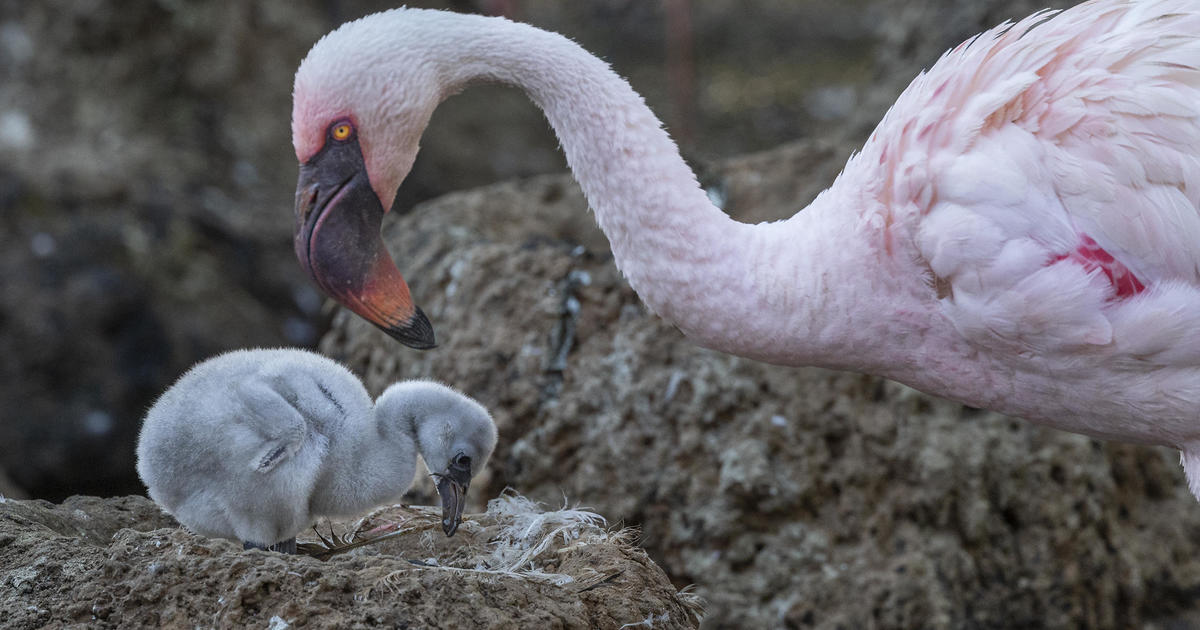Same-sex flamingo parenting is increasingly documented, showcasing the diverse and adaptable nature of animal families. This phenomenon, while not fully understood in all its nuances, highlights the flexibility of parental roles within animal societies and challenges traditional notions of family structures. Reports of male flamingo pairs successfully hatching and raising chicks are becoming more frequent, including a recent heartwarming success story from the San Diego Zoo Safari Park. This case, along with others observed globally, allows us to delve deeper into the behavior, biology, and social dynamics underlying this fascinating aspect of the animal kingdom.
The San Diego Zoo’s Flamingo Fathers
The San Diego Zoo Safari Park recently celebrated a momentous occasion: the successful hatching of a chick by two male lesser flamingos. These two birds, both in their 40s, demonstrated remarkable parenting skills, initially with a practice egg before being entrusted with a real, fertile egg. Their dedication was evident in their attentive care and shared brooding responsibilities, showing a strong commitment to nurturing their offspring. The chick, a healthy lesser flamingo, is now thriving under their expert care. This successful fostering highlights the competence of these male flamingos as parents and the zoo’s innovative approach to wildlife management.
From Fake Egg to Real Chick
The zoo’s approach to fostering this chick was a testament to their keen observation skills and understanding of flamingo behavior. Initially, the pair displayed a propensity for nest building and brooding behavior, leading the specialists to provide a substitute egg for practice. This innovative strategy successfully engaged the males in nurturing behavior, without them disturbing other breeding pairs. This demonstration of successful parenting skills made them the ideal candidates for the real, fertile egg, ultimately resulting in a healthy and happy chick.
Collaborative Care and Crop Milk
The two father flamingos exemplify exceptional teamwork, seamlessly sharing responsibilities. They equally alternate brooding duties, demonstrating an instinct and dedication equal to that seen in heterosexual pairs. This shared responsibility underscores the adaptability of flamingo parenting behavior and challenges the preconceived notion that only pairs of one male and one female can successfully raise offspring. Furthermore, both males diligently feed the chick crop milk, a nutrient-rich secretion from their upper digestive tract, essential for the chick’s development. Notably, crop milk production isn’t solely limited to biological parents; it can also be stimulated in other flamingos who assist with chick-rearing. The mutual feeding significantly contributes to the chick’s healthy growth.
Feather Changes as a Marker of Parental Investment
The act of feeding the chick has a visible effect on the parents’ plumage. The effort required to provide the chick with sufficient nourishment leads to a temporary decline in feather coloration, a remarkable demonstration of the intense parental investment the birds make. Their plumage becomes a lighter, palier pink, or even white, which gradually returns to its normal vibrancy once the chick becomes independent. This phenomenon provides researchers a physical marker showing the level of effort put into raising the offspring. The temporary change serves as a visible indication of the considerable energy expenditure in parental care.
Same-Sex Parenting in Birds: A Growing Phenomenon
The success of this same-sex flamingo pair is not an isolated incident. Reports of same-sex pairs successfully raising young are increasingly common in various bird species, including other flamingo species. These observations challenge the traditional understanding of avian reproduction and raise important questions about the adaptability and flexibility of animal social structures. There are multiple theories as to how these pairs come to care for chicks, often it appears the egg has been abandoned.
Theories and Explanations
The precise mechanisms driving same-sex pair bonding and chick-rearing in birds aren’t completely understood, with various possible explanations proposed. One prevailing theory suggests the pair has ‘adopted’ an abandoned egg. The absence of the biological parents then allows other birds, regardless of sex, to take up the task of parenting. This reflects the flexible and adaptable parenting roles prevalent in the animal world, showcasing their innate parental instincts, capabilities, and even the strong social bond between these male flamingos.
The Wider Context of Avian Social Structures
While research is still underway, it is becoming increasingly evident that sexual behavior and parental roles in birds are much more fluid and adaptable than previously thought. This new understanding reshapes our appreciation of animal family dynamics. Cases of successful same-sex parental care necessitate a critical re-evaluation of traditionally rigid concepts surrounding sex roles and family structures in animals. The successful raising of a chick by a same-sex pair challenges the conventional ideas of familial roles in the animal kingdom.
Conclusion and Takeaway Points
The success story from the San Diego Zoo, coupled with growing reports worldwide, underscores the fascinating reality of same-sex parenting in flamingos and the wider animal kingdom. This challenges previously held assumptions about reproduction and parental behavior, demonstrating that parental skills are not restricted by sex or traditional pairings. Successful chick rearing by same-sex couples further highlights the impressive adaptability and resilience of nature, highlighting a flexibility in parenting and social structures not often recognized.
Take Away Points:
- Same-sex parenting is increasingly observed in various bird species, including flamingos.
- This phenomenon demonstrates the adaptability and flexibility of animal social structures.
- The successful raising of a chick by same-sex pairs challenges conventional ideas of familial roles.
- Crop milk production is not restricted to biological parents, allowing for collaborative care.
- Further research is needed to fully understand the underlying mechanisms driving same-sex pairing in birds.




